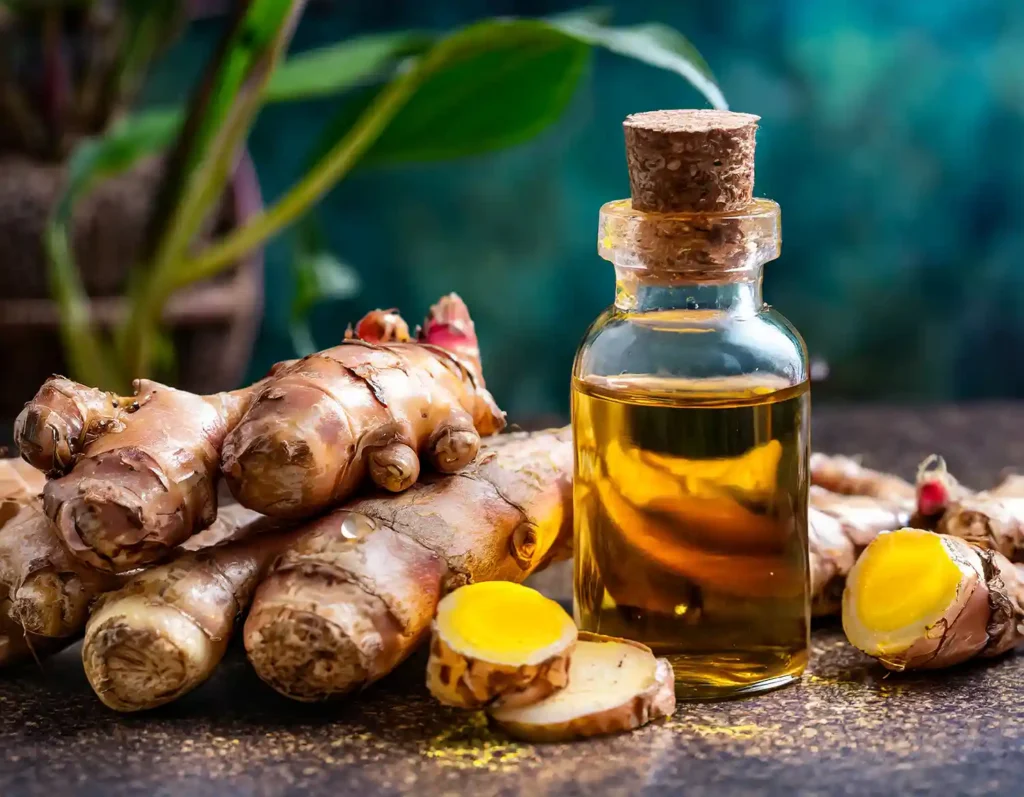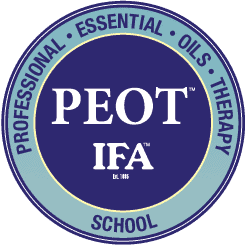Plai essential oil is an often unsung hero in the world of aromatherapy, although it is gaining increased recognition for its remarkable therapeutic properties. Extracted from the roots of the Plai plant, a member of the Ginger family, this oil is celebrated for its unique blend of benefits and uses.
What is Plai Essential Oil?
Plai essential oil is steam distilled from the fresh rhizomes of the Zingiber cassumunar plant family, native to Thailand, Indonesia, and India.
Commonly referred to as Pulei in Thai, from which its name Plai is derived, it belongs to the Zingiberaceae family, predominantly consisting of ginger species. In contrast to Ginger oil, which is derived from dried rhizomes, Plai oil is produced by steam distilling fresh rhizomes. This process gives it a distinct pale yellow colour.
The Unique Aroma and Characteristics of Plai Oil
Its spicy aroma is a complex mix of peppery notes with a hint of green and earthy undertones, setting it apart from other ginger varieties. It is intriguingly similar to ginger but with its own unique twist.
This pale yellow essential oil is gentle, non-toxic, non-sensitizing, and non-irritating, making it a versatile addition to any aromatherapy collection.
Its cooling and relaxing properties, as opposed to the warming nature of common ginger, make it particularly beneficial for treating sprains, inflammatory conditions, joint pain, and other muscular aches and pains.
The Origins and Traditional Uses of Plai
Plai, with its roots deeply embedded in Southeast Asia’s culture and traditional medicine, presents a rich history with many traditional uses passed down through generations.
Historical Significance in Southeast Asia
Originating from Thailand, Indonesia, and India, Plai has been a cornerstone in traditional healing practices for centuries. In these regions, it is not just an essential oil but a part of the cultural fabric. It has been used in cooking, as a remedy in folk medicine, and by Thai massage therapists.
With its legendary healing properties, the Plai plant has been a trusted ally in treating various ailments, from skin conditions to respiratory issues.
Traditional Therapeutic Applications
Traditionally, Plai has been revered for its potent anti-inflammatory and pain-relieving properties. It has been used to treat bruises and insect bites and alleviate symptoms of coughs, colds, digestive disorders, and respiratory conditions.
In massage therapy, particularly in the famous Thai massages, Plai is incorporated for its muscle-relaxing and analgesic effects. This traditional wisdom underscores Plai’s enduring relevance in modern therapeutic practices.
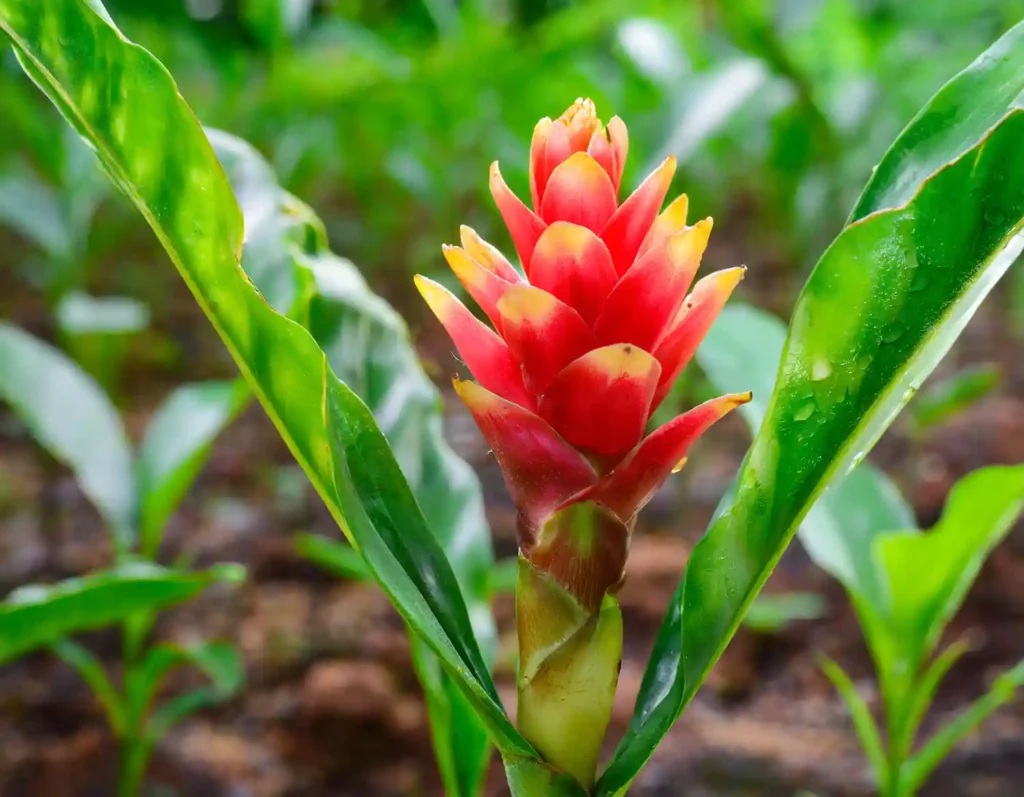
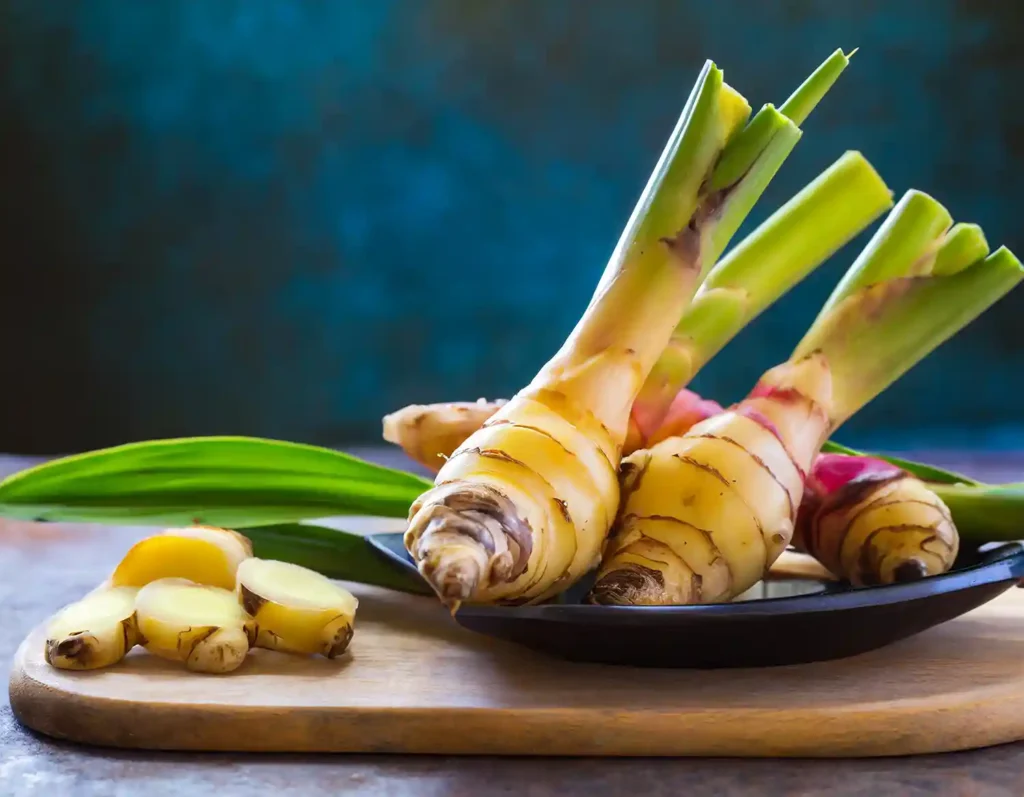
The Therapeutic Benefits of Plai Essential Oil
Plai essential oil is known for its unique scent and its wide range of therapeutic benefits. These benefits make it a valuable addition to a wide variety of treatments and wellness practices.
Anti-inflammatory and Analgesic Properties
One of the most notable properties of Plai essential oil is its ability to reduce pain and act as a natural anti-inflammatory and analgesic. It is particularly effective in soothing joint and muscle pain, making it a popular choice among massage therapists. Its cooling effect is beneficial for treating sprains and inflammatory conditions, offering relief without the warming sensation typical of other ginger-related oils.
On a personal note – Whilst anecdotal, I have found Plai oil to be very useful and effective for relieving hamstring strain and knee pain following field hockey matches! 🙂
Plai in Aromatherapy and Massage
In aromatherapy, Plai is used for its calming and grounding effects. It helps reduce stress and promote relaxation. When used in massage, its anti-inflammatory properties and soothing earthy aroma make it ideal for alleviating muscle tension, supporting circulation to ease pain, reduce anxiety and providing overall relaxation.
Respiratory Benefits and Other Uses
Plai essential oil is also known for its effectiveness in treating respiratory issues. It may help ease coughs, colds, and congestion symptoms, making it a beneficial oil to keep on hand during the cold season. Its antimicrobial properties and antifungal properties may also benefit overall skin health.
Plai essential oils play a significant role in pain management, aromatherapy, massage, and respiratory health, illustrating its multifaceted nature in promoting overall well-being.
How to Use Plai Essential Oil Effectively
Harnessing the full potential of Plai essential oil requires understanding its various applications and how to use it safely and effectively. Here are some guidelines and formulation ideas to help you incorporate Plai into your wellness routine.
Safe Practices for Topical Application
When using Plai essential oil topically, it’s important to dilute it with a carrier oil to prevent skin irritation. The IFA guideline is a 1% dilution, translating to 1 to 2 drops of Plai oil per 10 grams of carrier oil.
Suitable carrier oils include Apricot oil, Jojoba oil, or Sweet Almond oil. Please always do a patch test before widespread use, especially if you have sensitive skin.
Blending with Other Essential Oils
Plai blends well with other essential oils, enhancing its therapeutic benefits.
Blend it with Lavender oil, Marjoram, or Juniper for a powerful pain-relieving blend.
For a calming aroma, blend it with citrus oils such as Bergamot oil.
For relieving muscular discomfort, I’ve found that blending Plai with Black Pepper can be effective.
DIY Blends & Formulations for Home Use
A General Pain Relief Lotion
Mix 15-20 drops of Plai essential oil with 100ml of your unscented base lotion formulation.
Apply to the affected area 3 times per day for gentle pain relief.
Compress for Menstrual Cramps
Add 4-6 drops of Plai essential oil to 200ml to 500ml of hot water.
Soak a flannel or face cloth in the compress water, wring out excess water, and apply it to the lower abdomen.
Cover with a dry towel for 30 minutes for relief.
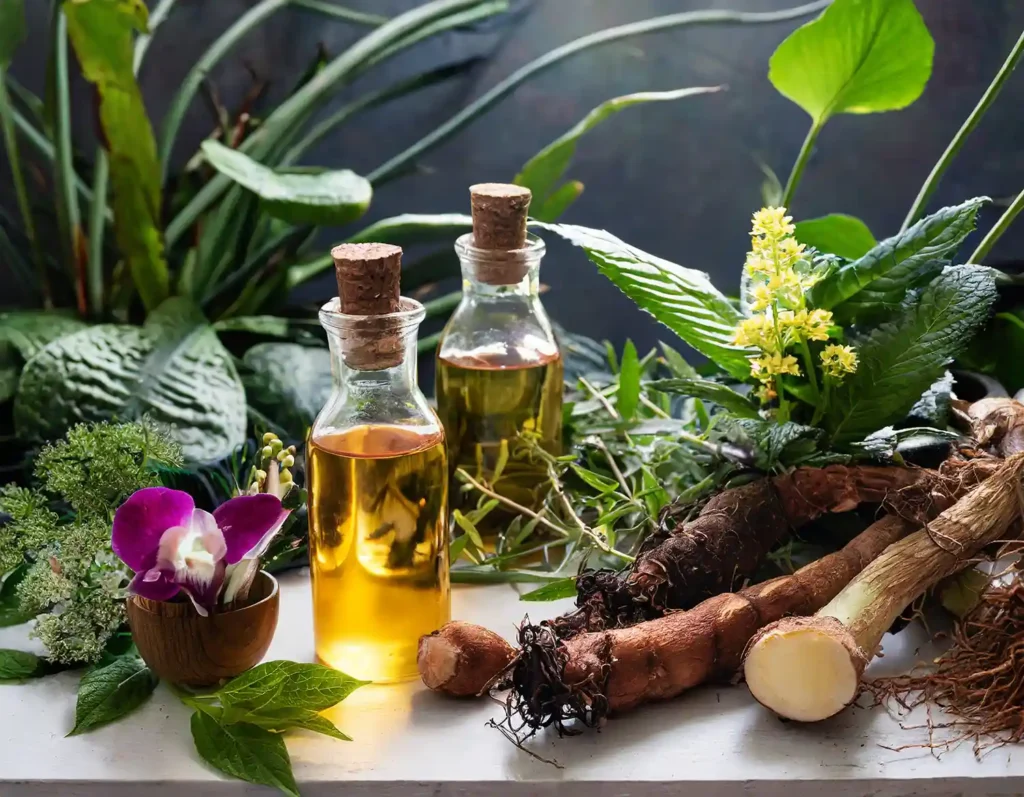
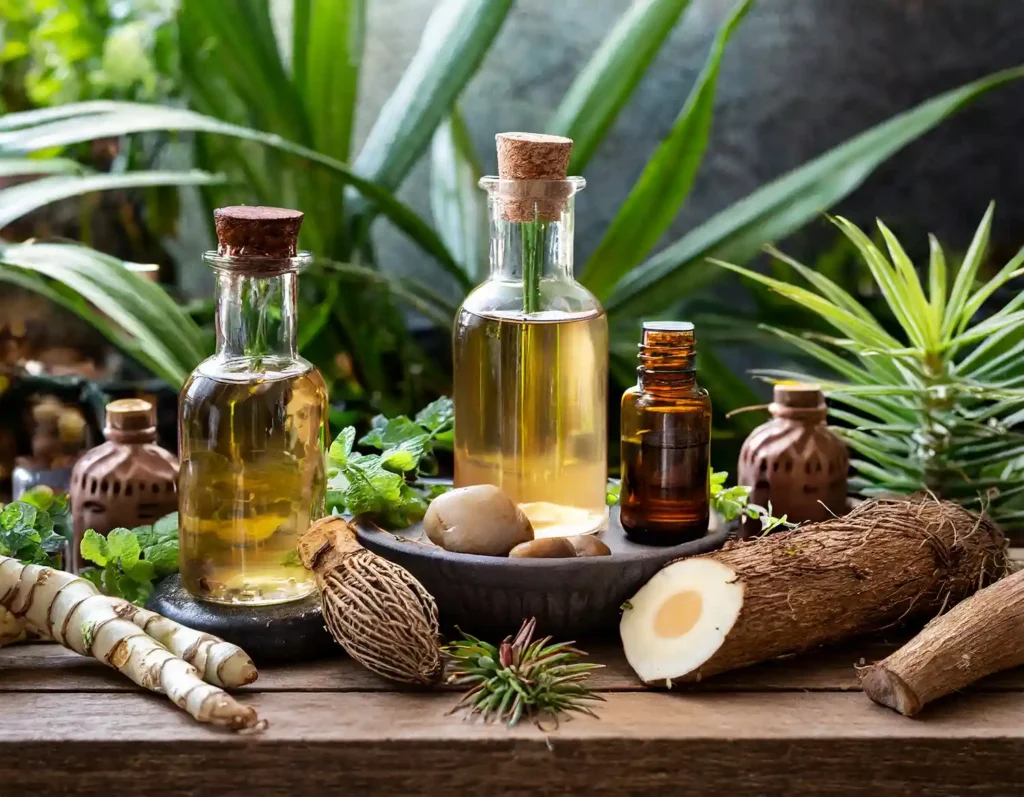
Understanding the Science Behind Plai
To fully appreciate the benefits of Plai essential oil, it’s important to delve into the scientific aspects that make it an effective natural remedy. Let’s explore the key chemical constituents of Plai and the research supporting its therapeutic uses.
Key Chemical Constituents
The primary chemical constituents in Plai essential oil, which contribute to its therapeutic properties, include:
1. Sabinene (27-34%): A natural bicyclic monoterpene commonly found in nutmeg essential oil, known for its anti-inflammatory, antimicrobial, and antifungal properties. It contributes to the oil’s effectiveness in treating chronic conditions like joint and muscle pain and its woody, peppery, pine-like fragrance with hints of camphor.
2. Terpinen-4-ol (30-35%): This is a significant component also found in Tea Tree oil. Terpinen-4-ol is known for its antifungal, antimicrobial, antibacterial, antiseptic, anti-neuralgic, and anti-inflammatory properties. It is crucial to the oil’s ability to combat bacterial infections and inflammation.
3. γ-Terpinene (6-8%): This compound has antimicrobial properties against various human pathogens and contributes to the oil’s overall antimicrobial efficacy.
4. α-Terpinene (4-5%): Similar to γ-terpinene, α-terpinene also contributes to the antimicrobial and antioxidant properties of the oil.
5. (E)-1-(3,4-Dimethoxyphenyl)butadiene (DMPBD) (12-16%): This constituent is known for its analgesic effects, playing a significant role in the oil’s pain-relieving properties.
These major constituents work synergistically to give Plai essential oil unique therapeutic benefits, particularly in pain relief, anti-inflammatory, and antimicrobial applications.
Research and Studies on Efficacy
Understanding the science behind Plai essential oil helps one appreciate its value as a natural remedy and encourages informed usage in various therapeutic contexts.
Several studies have highlighted the efficacy of Plai essential oil in pain management and inflammation reduction. Its long-lasting analgesic properties may provide relief for up to 24 hours. Additionally, its anti-inflammatory action makes it a valuable tool in treating conditions like arthritis and muscular sprains.
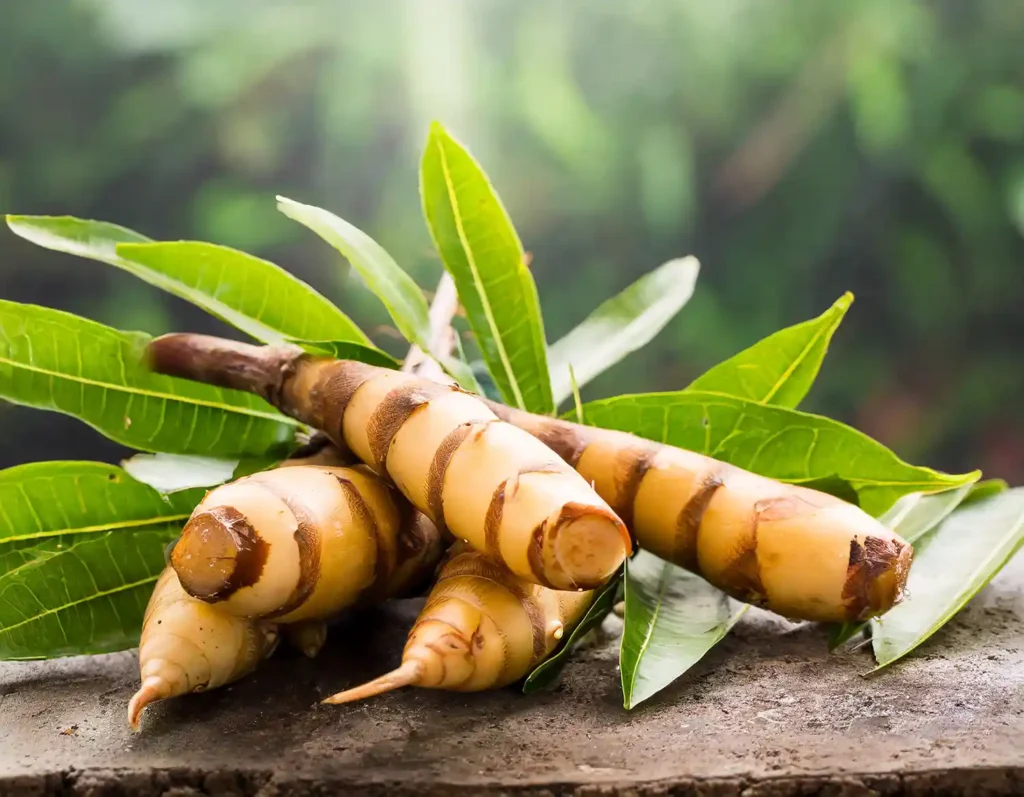
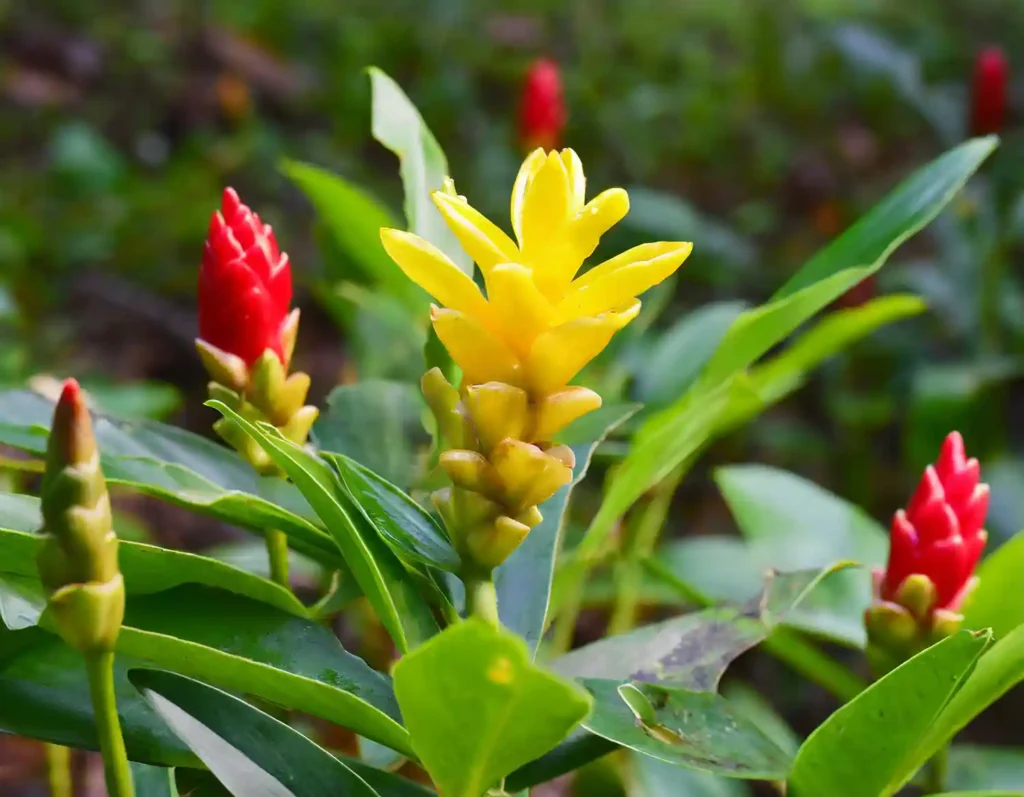
Precautions and Considerations
While Plai essential oil offers numerous health benefits, it’s crucial to use it cautiously to ensure safety and effectiveness.
Who Should Avoid Plai Essential Oil
Plai essential oil is generally considered non-toxic and safe when used correctly. However, certain individuals should exercise caution or avoid its use:
Pregnant and Nursing Women: Due to a lack of research on its effects during pregnancy and lactation, it’s advisable for pregnant and nursing women to avoid using Plai essential oil.
Children: While Plai can be safe for children in very diluted forms, it’s best to consult with a qualified Professional Essential Oil Therapist before use.
Individuals with allergies to ginger or other members of the Zingiberaceae family should be cautious, as they may react similarly to Plai.
Tips for First-Time Users
For those new to using Plai essential oil, here are some tips to ensure a positive and safe experience:
Patch Test: Always conduct a patch test before using the oil extensively, especially if you have sensitive skin.
Start with Low Concentration: Begin with a lower oil concentration and gradually increase it as needed up to 2% in a carrier for use on small areas.
Consult Professionals: If you’re using Plai oil for therapeutic purposes, consult an IFA-qualified Professional Essential Oil Therapist for guidance.
Storage and Shelf Life: Store the oil in a cool, dark place to maintain its efficacy. This oil can oxide quickly, so be mindful of its shelf life and discard any oil that smells off or has changed in consistency.
By adhering to these precautions and considerations, you can safely enjoy the benefits of Plai essential oil while minimising any potential risks.
Conclusion
As we wrap up our exploration of Plai essential oil, it’s clear that this remarkable oil offers a wealth of benefits for both physical and emotional well-being. Its unique properties make it a valuable addition to any natural wellness toolkit.
Plai essential oil’s versatility allows it to be easily incorporated into various aspects of life. Plai can offer significant benefits if used for pain relief, in aromatherapy, or as part of your general self-care. Remember to use it mindfully, respecting its potency and following safety guidelines.
In conclusion, Plai essential oil is a powerful, natural remedy with a rich history and broad uses. By understanding its properties, benefits, and safe usage, you can harness its potential to enhance your health and well-being.


